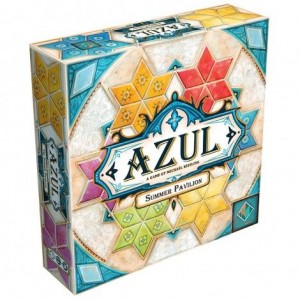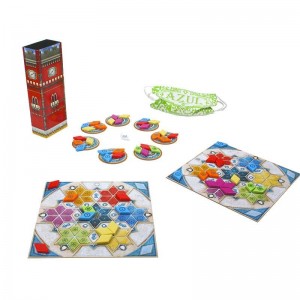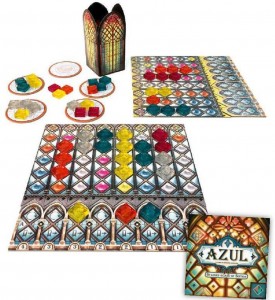Sequel of AZUL AZUL: Summer Pavilion | Game Doer
AZUL was a famous board game originally designed by Michael Kiesling, painted by Chris Quilliams, and published by Next Move Games. It was a board game that became popular all over the world once it was released in 2017. As the game combines attractive tile accessories and simple gameplay, it can indulge both core players and ordinary players.
The sequel, AZUL: Stained Glass of Sintra, was released in 2018. It continues the exquisite painting style of the previous work, and the colorful art design is intoxicating! At the level of game mechanics, the inter-card nature of this sequel has been reduced a lot, and round reward points have become the key to determining the outcome.
This time we introduce the third sequel of AZUL, AZUL: Summer Pavilion.
The back ground of AZUL: Summer Pavilion is as bellowing.
In the 16th century, King Manuel commissioned Portugal’s greatest artisans to build magnificent buildings that are famous in the world. After completing the Evora Palace and Sintra Palace, the king hoped to build a summer garden to commemorate the most famous royal family members. Only the most talented craftsmen can control this type of architecture-their skills can highlight the royal temperament. Unfortunately, King Manuel passed away before construction began.

In this version, the board game tiles are in diamond shapes, and the player needs to place them in the seven petal-shaped areas of the game board. Six of the areas require different colors of monochrome tiles, and the seventh area requires one tile of each color.

The tile selection process is similar to AZUL. Players can select all tiles of a single color from the tile pool on a single factory card. In each of the 10 rounds, there is a tile color that is considered wild. Wild colors cannot be specially selected, but if there are wild colors in the selected factory, these wild color tiles will also be taken away by the player.

The tile placement in AZUL: Summer Pavilion’s takes an interesting new approach. Players will not immediately put the collected tiles on their boards, but will collect them in their personal storage space. Each round player can place one of the tiles on their player board by paying a certain number of tiles of the same color from the storage space.



